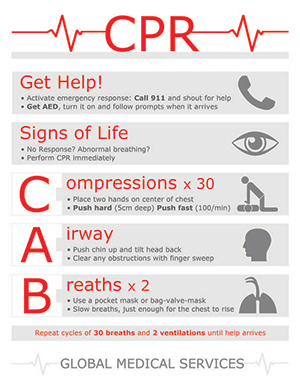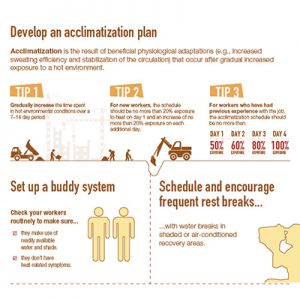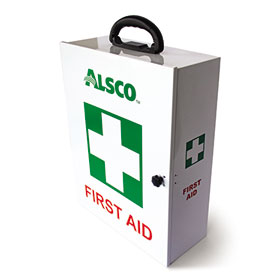“A life without love is like a year without summer”– Swedish proverb.
Summer is a fabulous season of the year; nature is at its best! Think of the breathtaking views, warm weather and longer days.
Summer is a full feast of nature, and a perfect invitation to spend more time outdoors. For employees hunkered down at the office all year, summer is a time to take a break.
For those still at work, it’s a time to enjoy team-building exercises. Fun activities such as biking and hiking are also scheduled this time of the year.
Summer is a time full of fun, but the activities of the season pose great safety risks for your employees.
In 2019, there was a 24% increase in preventable drowning cases in New Zealand. 34 people died on New Zealand roads in December of 2018. The number is four more than the average number of the last five years.
An estimated 5,000 – 6,000 hospitalisation cases each year are due to work-related ill health.
Combined with having to work under spiked temperatures, summer has its challenges.
Thankfully, this article talks about six ways to keep your employees safer this summer.
Before we delve into that, here are some common summer emergencies you should be aware of.
Heat Exhaustion and Dehydration
Temperatures swell in summer, and the excess heat can easily cause problems on the human body.
Heat exhaustion is caused by water and salt depletion in your body. The condition is worsened by physical activities such as working or sporting. Employers are to ensure that workplaces are safe and conducive to good health.
Symptoms of heat exhaustion include dizziness, nausea, vomiting and muscle cramps.
If left untreated the condition can lead to a heat stroke.
Useful tips:
- Administer fluids.
- Cut out any unnecessary physical activities.
- Move to the shade as you seek medical assistance.
Swimming/Drowning Accidents
Swimming workouts are an excellent way to crank up your whole body.
For your employees, swimming is an excellent way to manage stress and to keep fit. The exercise is also a mood booster, and your office needs to be happy, right?
Whether it’s for a break or part of your team building activities, swimming for employees is a plus. The warm summer weather provides a perfect background for this activity.
It can be fun-filled, but there is also a risk of drowning.
Useful tips:
- Offer swimming lessons.
- Ensure a lifeguard is on duty.
- Provide CPR training.
Food Poisoning
Do you provide a catering service for your employees? If your answer is yes, then you definitely have to worry about food poisoning. Food provided at the workplace should meet food safety standards.
The summer season is also a time of office parties. As you get on with providing catering, ensure that the food is prepared and maintained to the highest standards.
Useful tips:
- Ensure high hygiene standards.
- Seek help in case of an emergency.
Skin Injuries: Burns and Cuts
Skin injuries are common in summer because more time is spent outdoors. The summer allows people to spend time at the beach with workmates, family or friends. Summer is also the time to enjoy cookouts and barbeques.
It is important to encourage your employees to take precaution to avoid getting hurt.
Useful tips:
- Wear sunscreen.
- Carry protective clothing.
- Provide first aid training.
Road Accidents
Isn’t summer just the time to enjoy travel?
Travel during summer could be for work or leisure. Remind your employees not to throw caution to the wind as they cruise down those roads.
Useful tips:
- Always exercise caution on the road.
- Use vehicle sunshades and sunglasses to improve visibility.
- Provide basic first aid and carry a first aid kit to work outings.
Fire Accidents
A lot of fire accidents occur during the summer. This is because people are out to have fun, and may easily forget to put out the fires.
Useful tips:
- Ensure fire pits and grills are 3 feet away from any structure.
- Use fire starters or kindlers.
- Keep a bucket of sand, fire extinguisher and water source close by.
- Keep your grill clean to avoid grease fires.
Hiking/Camping Accidents
Hiking and camping activities are also scheduled in summer. The risks of accidents occurring are high in the great outdoors and so precautions should always be taken seriously.
Useful tips:
- Carry a first aid kit.
- Wear protective clothing.
- Pack some snacks and water.
- Ensure you have navigational tools like GPS devices.
6 Ways to Protect Your Employees
1. Create a Cooler Workplace
In many workplaces, high temperatures are a common problem.
Industrial setups such as warehouses or manufacturing plants can experience even higher temperatures. This poses a great risk to workers already burdened with heavy protective clothing. There is, therefore, a need to create a cooler workplace.
Use Ventilation
The traditional solution involves the use of ventilation. The use of fans, opening of doors and windows could work in a normal office set up. This is not enough in industries where outdoor dust can interfere with machinery.
Invest in a Cooling System
To keep employees safe, it is important to invest in a mechanical cooling system. This is effective for offices and industries as it also allows dehumidification.
2. Provide Water/Hydration Stations
An adequate supply of water should always be provided to employees. Employers must also provide disposable cups.
Employees working outside also have a right to drinking water.
Drinking dispensers should be regularly cleaned to avoid contamination.
Employers should also encourage workers to stay hydrated at all times. Hydration stations should be strategically placed for easy access by everyone.
3. Encourage Regular Work Breaks
Every worker has the right to work breaks.
During the warmer weather, exposure to heat can lead to serious complications including:
- Heat cramps
- Heat exhaustion
- Heatstroke
To protect workers from heat-related illnesses, allow them to rest in air-conditioned rooms. Those working outside should also rest in trailers or in the shade.
Rest periods do not necessarily have to be unproductive times. Your employees could carry out lighter work or receive training.
4. Offer First Aid and CPR TraininG


While summer graces us with many happy occasions, accidents are also bound to happen.
Employers are obligated to offer first aid training and equipment employees.
First aid kits are essential for any workplace set up. They come with first aid supplies which enable one to act efficiently in case of an emergency. When accidents happen, trained employees will be able to take the right action to save lives or prevent further injury.
First aid training helps in making employees more conscious about workplace safety. This helps in reducing the number of accidents or work-related injuries. It teaches employees how to use first aid kits in case of an accident.
First aid training also helps in creating a more positive workplace. It is your opportunity to prove that you care about your employees.
5. Have a Rapid Response Team in Place
A first aid response team is crucial in emergency planning. Emergency response teams should be familiar with their roles and responsibilities.
They should also be trained in first aid to ensure that they save lives.
A rapid response team can consist of outsiders or it can be part of your personnel trained on first aid. A contracted safety or first-aid company is an example of a rapid response team consisting of outsiders.
Having a rapid response team in place:
- Increases chances of survival in accidents.
- Contributes to hazard prevention and reduction of accidents and injuries.
- Helps in identifying and assessment of workplace risks.
- Improves employees morale.
6. Promote a Safe Workplace Culture
How do you actually do things at your workplace?
Building a positive safety culture involves changing the attitudes and behaviours of workers.
To build a good workplace safety culture:
Communicate
One way to build a strong safety culture is to communicate. Effectively and often.
Hold weekly or monthly meetings on safety and discuss how to improve it. Make safety policies readily available for all employees and keep communication channels open.
Lead by Example
As management, you are more convincing when you lead by example. Take a lead on following safety precautions and your employees will follow suit.
Provide Training
Training employees makes your employees more knowledgeable about safety hazards all around them. It also demonstrates your level of commitment to their safety and well-being.
Involve Employees
Involving employees in safety helps in building a strong safety culture. It also allows you to receive feedback on areas you may need to improve on.
Reward Positive Behaviour
Rewarding positive behaviour helps in boosting morale amongst employees. It also promotes the safety culture at your workplace.
Get Started: Promoting a Positive Safety Culture at Work
To keep your employees safe this summer and beyond, you’ve got to promote a safety culture:
- Take preventative safety measures.
- Involve all employees in safety education.
- Reward those who adhere to safety regulations.
Lastly, always plan ahead as you never know when disaster strikes. Having a first response system will save you a lot in case of an accident!
With vast years of experience, Alsco provides you with rented emergency response systems that are perfect for your workplace. We also offer a wide range of first aid services to suit your business. Contact us today to find out how we can help your business prosper.








